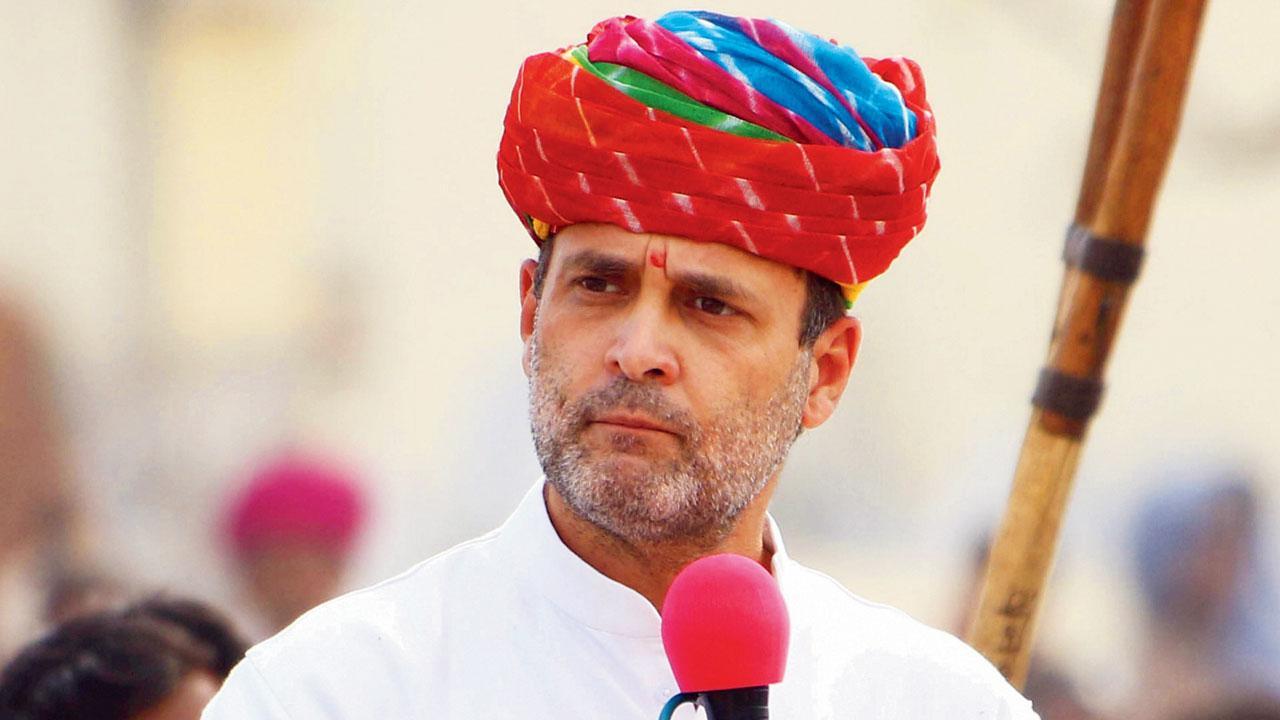The upper castes have been largely indifferent to Indian polity taking an undemocratic turn and Rahul’s tweets on the Modi government’s ills can do little to revive the party

Rahul Gandhi. File pic
From February 1 to February 27, Congress leader Rahul Gandhi posted 69 tweets, which were retweeted 9,56,400 times in total, at an average of 13,861 retweets a post. Yet Gandhi’s ostensible popularity on social media failed to win a single seat for the Congress in the recent Surat Municipal Corporation election. The party was dethroned from power in Puducherry last week, as it had also been, earlier, in Karnataka and Madhya Pradesh. Out of 11 States that send 21 or more MPs to the Lok Sabha, the Congress is in power on its own in just Rajasthan and is a junior partner in Maharashtra’s coalition government.
ADVERTISEMENT
It is not surprising that Gandhi’s tweets against Prime Minister Narendra Modi have failed to resurrect the fortunes of the Congress. After all, Gandhi’s 17.6 million followers on Twitter constitute an infinitesimal fraction of India’s 900 million voters. Gandhi’s tweets claim the Modi government is undemocratic, intolerant of free speech, subverts institutions, encourages the politics of hate, favours Mukesh Ambani and Gautam Adani, India’s top business tycoons, and has severely damaged the economy.
Yet the Congress has seldom pressured the Union government to reverse any of its economic policies as, for instance, farmers are currently doing. No government fears a tweet unless it is backed by political action, which is not possible without an army of committed workers. In large parts of India, the Congress is moribund, prodded into life weeks before every election. For the rest of the time, Congress sympathisers have a hearty laugh at Gandhi’s tweets that drip with biting sarcasm. Their patient wait for action eventually culminates in listening to his speeches, cheering him, voting for the Congress – and often ending up on the losing side.
Gandhi’s reluctance to engage in organisational work is possibly linked to the belief that the Congress is the “natural party of governance”, to which people will eventually turn after tiring of the misgovernance of its political adversaries, whether or not its structures are revivified. This had indeed happened in 1980, 1991 and 2004. There are already signs of popular discontent mounting, evident from the protests against the Citizenship Amendment Act and the three new farm laws. Since 2014, Dalits have been reeling under violent attacks. A sluggish economy hit by a hasty, prolonged COVID-induced lockdown has lowered incomes and caused a surge in unemployment.
Yet it is moot whether Gandhi’s argumentative tweets will persuade the upper castes, once the pivot of the Congress social base, to ditch the Modi government. What we are witnessing today is the “revolt of the upper castes,” a felicitous term coined by economist Jean Drèze. Barring the small liberal segment among them, they have been largely indifferent to Indian polity taking an undemocratic turn. The upper castes swung behind the BJP in response to the VP Singh government’s decision, in 1990, to grant reservation to the Other Backward Castes. They hoped that Hindutva’s emphasis on demonising Muslims would unite the Hindus and stem the challenge to their hegemony posed by subaltern groups.
Their hopes were unevenly realised until the advent of Modi in 2014. His own OBC-chaiwalla identity helped enlarge the BJP’s social base. His promise of development and politics of Hindu-Muslim polarisation gave him majority at the Centre twice and enabled the BJP to conquer one State after another. The upper castes have undeniably benefitted from the Modi regime. In the Hindi belt, political scientist Christophe Jaffrelot points out, 45 per cent of the BJP MPs were upper caste in 2014 and 2019; 47 per cent of the Union ministers in 2019 were upper caste.
Then again, the income limit for qualifying for the 10 per cent reservation for the Economically Weaker Sections includes 96 per cent of the upper castes. The government’s policies allowing lateral entry into Central government services and privatisation of the public sector will further reduce the efficacy of affirmative action. Indeed, the self-interest of the upper castes will not have them heed Gandhi’s tweets seeking to educate them on the Modi government’s elitist, undemocratic nature.
Dalits, Muslims and the poor from other social groups too had once constituted the formidable base of the Congress. Many of them are now aligned with regional outfits. Statistics show the BJP’s rise has been at the expense of the Congress, not regional outfits. In the 1989 Lok Sabha election, the Congress secured 40 per cent of national votes, the BJP 11 per cent and regional outfits 49 per cent. The vote-share of regional outfits never dipped below 44 per cent over the next 30 years, in sharp contrast to the Congress, which plunged to 19 per cent in 2019. This decline was partially on account of Sharad Pawar, Mamata Banerjee and YS Jaganmohan Reddy leaving the party to float their own outfits. In the same period, the BJP’s vote-share grew from 11 per cent to 37 per cent.
The upper caste Congress leadership cannot bank upon the return of their caste brethren, and needs to forge a new social alliance. Which social groups to woo is an organisational decision, which cannot be made by a rudderless party without even a captain. At this moment, it can only be said: “Rahul tweets while Congress sinks.”
The writer is a senior journalist. Send your feedback to mailbag@mid-day.com
The views expressed in this column are the individual’s and don’t represent those of the paper.
 Subscribe today by clicking the link and stay updated with the latest news!" Click here!
Subscribe today by clicking the link and stay updated with the latest news!" Click here!






